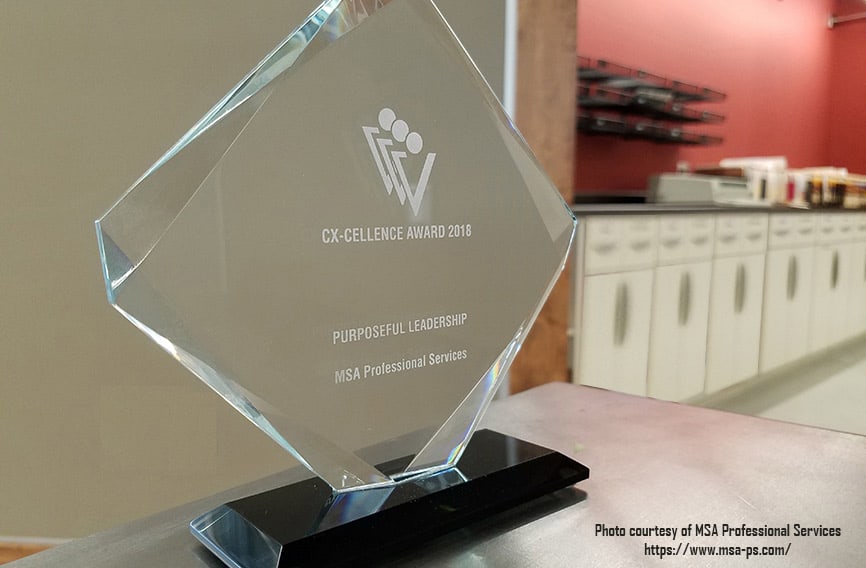My colleague recently took a trip to the mountains of North Carolina for a long weekend with his fiancée. He reserved a cute little cabin in the woods on Airbnb and looked forward to some quiet down-time. After a four-hour drive, they arrived – it was beautiful! The instructions in the Airbnb app said the key would be under the flower pot. But, there was no flower pot. They looked in all the usual places, and no key could be found.
Tired, frustrated, and anxious, my colleague fired up the Airbnb app and pressed the button to reach customer service. He explained the situation, and got this reaction:
Wow, I’m so sorry! That’s got to be frustrating. Tell you what, it’s dinner time – I’m texting you ten highly-rated nearby restaurants. Go grab dinner, snap a picture of the receipt and send it to me – we’ll reimburse you up to $50. While you two eat, I’ll get this figured out for you.
Sure enough, by the time dinner was over, the cabin’s owner texted, apologized, and told them where the key had been relocated. They got back to their private getaway, got in easily, and enjoyed their weekend.
What could have been a terrible experience that likely would have prevented a customer from ever returning, instead became a great story about designing your client’s experience. The Airbnb employee was able to quickly come up with a great solution because Airbnb had a plan for this. They have customer experience architects who think through the customer’s journey from signing up for the app through post-stay engagement. They’ve spent the time creating storyboards of each critical moment in the customer’s journey to communicate clearly to their team “THIS is how we do things here.”
Welcome to Client Experience Management
Why did Airbnb go to all the effort to design their customer’s experience and train their team to deliver on their brand promise?
It’s simple. Airbnb understands people make decisions based on how they feel (emotions) and then validate their decision using logic or reason. They recognize their customers have choices about where they stay and, quite frankly, they want them to choose to continue using Airbnb. A quick search of Airbnb competitors brings up a list of more than a dozen alternatives to choosing Airbnb. Airbnb has chosen to use client experience as their strategy to:
- Retain their customers
- Increase their market share
- Build a positive perception in the marketplace

And it is working. The company continues to be hugely successful in their strategy dominating the short-term rental market with a 65% share of the market in the top-ten cities by inventory.
Your clients are no different than Airbnb’s. I’m sure your team is really good at what they do. However, as Wright Sullivan, President of A&E Engineering reminds us, “All of us have competitors who do really great work. And all of us have competitors with really good people. So, client experience (CX) becomes the real big differentiator.”
Differentiate based on CX
When you think about making CX your differentiator as Airbnb has done, consider your clients' experience working with your firm includes their emotional response to any interaction with your brand as well as every touchpoint with your firm. Whether it's your website, a proposal, meetings, or an invoice; each of these interactions creates a positive, neutral, or negative sentiment with your client. What Airbnb has done, and what your firm can do as well, is use different tools, techniques, and processes to design and shape these interactions with your clients.
Client Experience Management (CXM) is focused on integrating these tools and processes with your existing service delivery. It lets your firm consistently and predictably create positive emotional engagement with your clients every time and across all channels. Over time, CXM touches nearly every aspect of your business. Bringing the whole business more in line with what clients want, need, and expect results in tangible and measurable outcomes to your top and bottom line.

Client Experience Management has many entry points. However, the first step for a successful program is for leadership to identify why and how CX as a differentiator will help the firm achieve its goals.
What is your firm's business case for CX?
If you answer yes (or even maybe) to any of the following, then keep reading and download the document below.
- Having trouble obtaining (or retaining) top talent and your clients and firm growth is suffering as a result.
- Want to expand geographically (or into new market sectors) but are struggling to achieve the results you want because there are already major players in the market.
- Having a hard time cross-selling your disciplines to your existing client base.
- Share of wallet with existing clients is lower than you would anticipate (or like).
- Competition is eating into your base and you're having trouble differentiating your firm.
Your firm will not adopt or sustain a CX focus without a compelling cross-organizational business case. What are your firm's goals? What are the real (or perceived) obstacles to achieving those goals? Who is impacted? How are they impacted? What is the cost to your firm in either revenue or missed opportunity to overcome those challenges?
Understanding your firm's goals and making a business case for how client experience can help you achieve those goals is an important first step. Client Savvy has a team of experts available to walk you through a proven process to identify and quantify your firm's power goals and get your team looking through a client experience (CX) lens. We've developed Power Goal Worksheet to give you an overview of this process. Click the button below to download the worksheet AND as a bonus, you'll get a link to watch a brief 5-minute video on linking CX to your strategic business priorities.
If you would like to speak with a client experience consultant or to learn more about how to design an award winning client experience culture, Contact us here.






